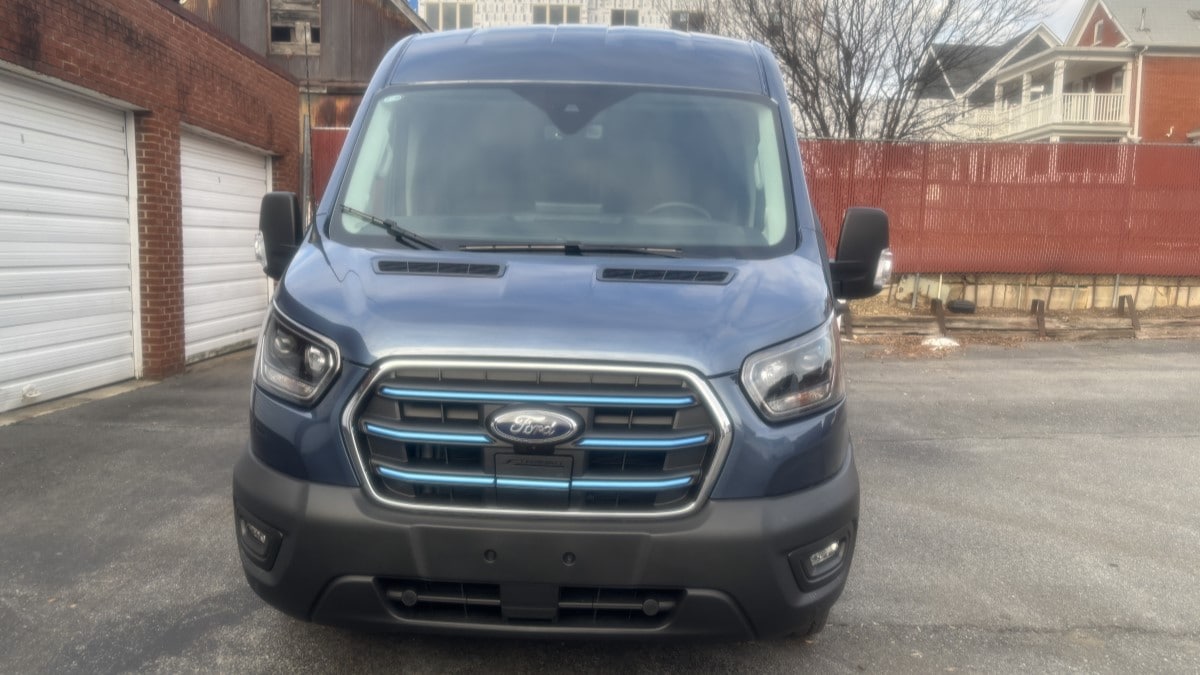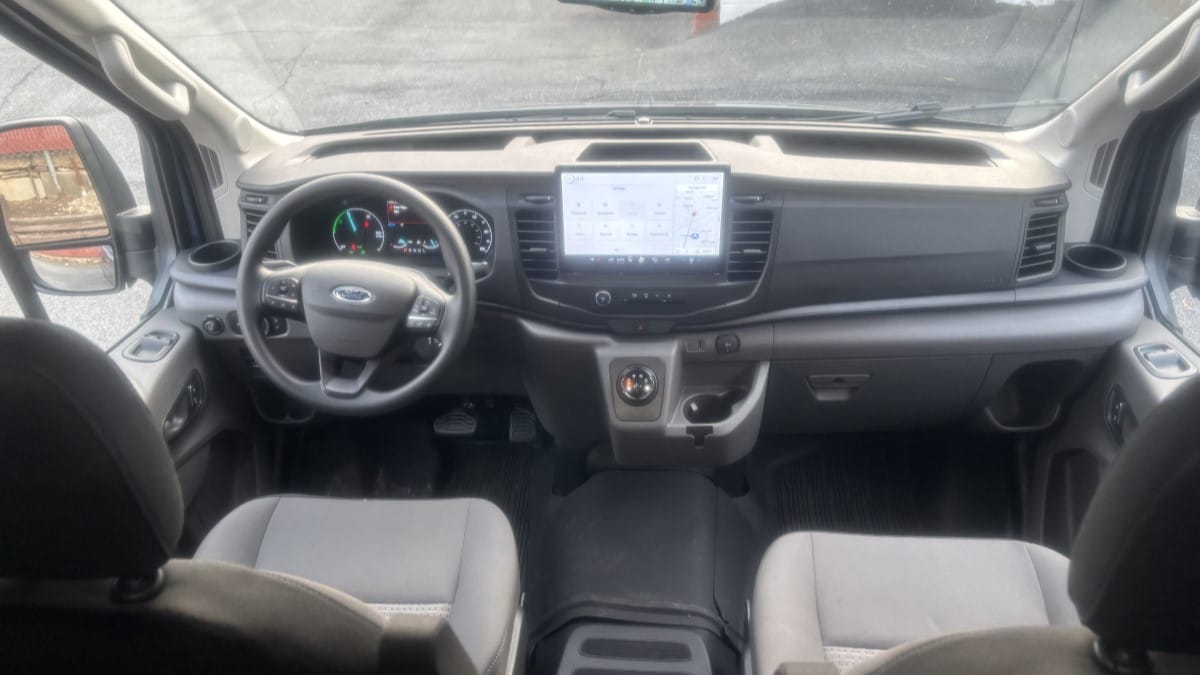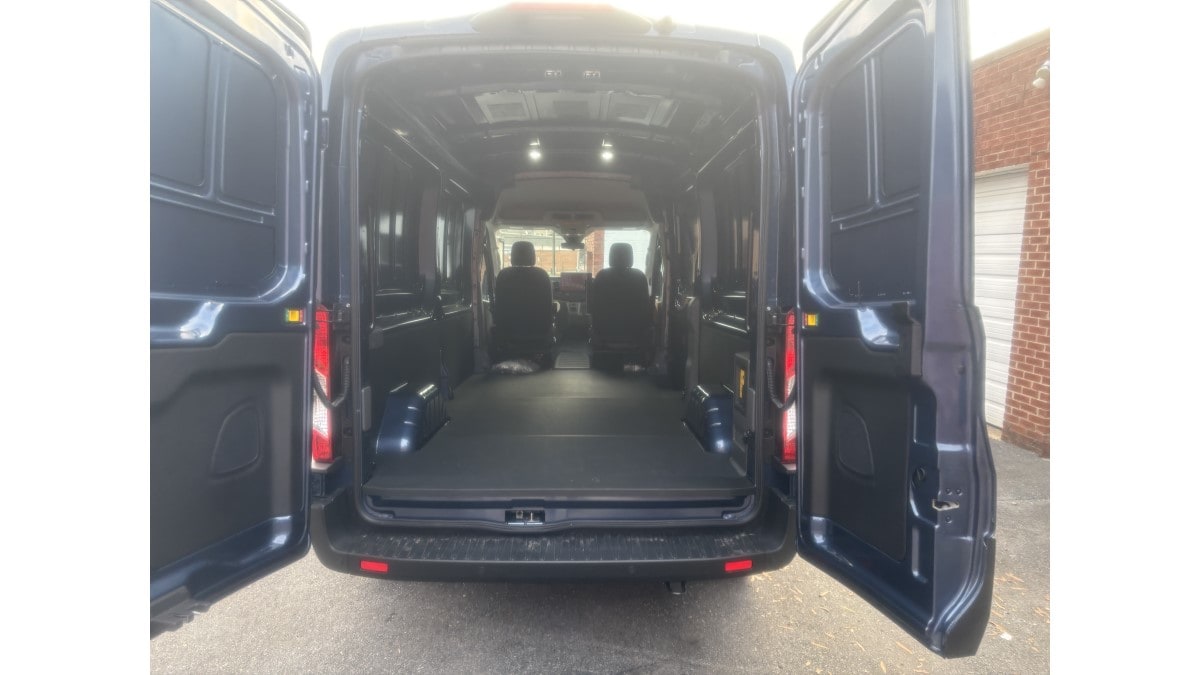When many car designers unveil a new electric vehicle (EV), they aim for a distinct visual identity. They often get excited about the instant acceleration EVs provide. If you haven’t experienced it, you might be surprised – EVs sprint off the line faster than gasoline equivalents because they deliver 100% of their torque from the start without any delay. Designers often try to make their EVs look like EVs, so everyone knows the owner has embraced the new tech. They leverage innovative technology, like low-rolling-resistance tires and heated surfaces instead of heated air, to squeeze a few more miles from each battery charge. But not the team behind the 2025 Ford E-Transit. Its creators pride themselves on avoiding those design cues. A Ford representative disclosed that the goal was to create a vehicle that could blend in, like one of those sheepdogs that look exactly like sheep. Without a closer look, you might never realize the E-Transit isn’t a standard Transit. That, surprisingly, is a brilliant approach.
I spent a week with the E-Transit, running errands, and mainly driving on city streets. I drove away truly impressed by the engineering team’s achievement. You can tell it’s electric, but in only a few positive ways. And if you’re a fleet manager looking to integrate new vans into your current lineup, this is great news, especially since Ford matches the prices of its gas-powered counterpart. Both the gas-powered Transit and the electric E-Transit cargo vans start at the same price (to the dollar!) for 2025.
For entry-level E-Transits, configured with a low roof and a long wheelbase, this equates to $53,095 – a base price of $51,000, plus a $2,095 delivery fee. My test model included upgrades like a heavy-duty cargo floor and the Pro Power Onboard system, adding power outlets in the cargo area. Its asking price is $55,920, including the $2,095 delivery fee.
‘We Changed as Little as Possible’
It takes a keen eye to differentiate an E-Transit in a parking lot of Transits. The only giveaway? The horizontal bars on the grille are blue. That, along with a door for the charging port located directly under the front Ford emblem, are the only visual differences.

Interestingly, I encountered a few people who recognized the electric van during my week with it. Twice, roadside work crews flagged me down to ask about the range. There’s a lot of logic behind the similarities between the two vans. Ford Transit Brand Manager Sean Masson says the goal was to simplify integrating E-Transit models into existing fleets using gasoline-powered Transit vans. To streamline this, Ford incorporated as many cross-functional parts as possible. Every body panel is identical, and even the tires are the same. Ford could have potentially achieved a longer range with EV-specific tires. However, understanding that fleet managers order bulk shipments of tires, they didn’t want to require them to stock two different tire types.
A Familiar Cabin, Too
That means nearly identical controls, as well. The driver’s instrument cluster has hardly changed from the conventional Transit’s setup. A battery meter replaces the gas gauge, and the 12-inch multifunction touchscreen adds a menu to monitor the charging process. Those are the only changes. A driver familiar with a Transit can immediately switch to the E-Transit without relearning how to operate it.

Ford does recommend most buyers opt for a bulkhead behind the rear seats, which eliminates the need to heat or cool the large cargo space. However, it’s an option because Ford deliberately wants as few “forced features” as possible, allowing buyers flexibility in customizing the cargo area to meet their specific needs.
A Smoother Driving Experience
You’ll only truly notice you are driving an E-Transit rather than a gas-powered Transit on two occasions. The first is when you quickly push the accelerator. The E-Transit isn’t super fast, but it is still a full-size cargo van – a high-roof model, in the case of my test vehicle. However, the E-Transit actually turns out to accelerate quicker than any gasoline-powered cargo van I have ever driven. The ability to effortlessly merge into highway traffic, even with only a short distance to accelerate, is a welcome feature.
The second is when traveling on roads that are less than perfect. A conventional gas-powered van has most of its weight up front, primarily due to the engine location. This arrangement might make vans feel tail-heavy and have a rough ride when carrying little or no cargo. The characteristic squeaks and bumps of an empty cargo van result from the rear suspension, designed to support heavy cargo, feeling stiff when carrying a light load. But not in the E-Transit. The E-Transit has an 89-kWh battery centered under the floor, almost evenly distributing the weight. This produces an astonishingly smooth ride.
The base E-Transit is rear-wheel drive (RWD), while most gas-powered vans are front-wheel drive (FWD). The difference is barely noticeable in practice, although it might contribute to its smooth ride. It’s hard to upset the E-Transit’s suspension. It effortlessly glides over speed bumps and provides a near-silent ride.

Specific Applications, but for Those, It May be a Better Choice
If you are familiar with Transit vans, the E-Transit presents almost no learning curve. It just gives you more power and a more pleasant ride, with virtually no appreciable changes. For fleet managers, the range factor is a significant shift. Range is an inexact science with vans that heavily depends on the buildup’s weight, and whether the buyer decides to include a high-, mid- or low-roof, among other factors. I charged my high-roof, extended-length model to full, and its display predicted a range of 129 miles. Its estimates were accurate in around-town driving. This is plenty for most urban commercial uses, with well-established routes and reliable access to off-shift charging. However, it renders this model impractical for some parts of the country and for vehicle rental fleets. Despite those limitations, the E-Transit needs careful consideration.

Masson says the average E-Transit customer spends 48% less on maintenance than they would for a gas-powered equivalent. With a better ride and no learning curve, the E-Transit is a smart option for many commercial operations.


